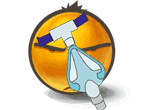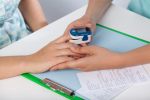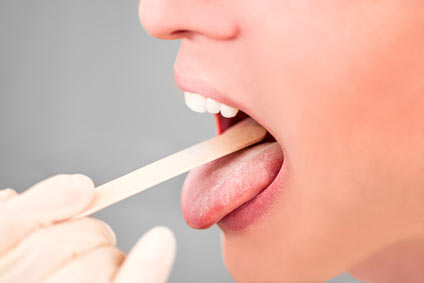CPAP Side Effects
How to Eliminate the Side Effects of CPAP Therapy
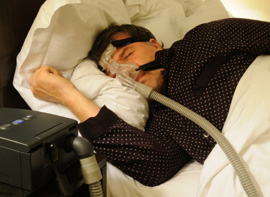
In this page you'll find a list with CPAP side effects and
solutions to every one of them. You'll learn how to overcome the CPAP
problems before starting the treatment for sleep apnea!
Continuous positive airway pressure (CPAP) was once very cumbersome but has become more comfortable in recent years.
Newer models of CPAP machines are lighter and quieter, and many offer options such as warmed humidified air (which alleviates nasal congestion, skin dryness, and dry mouth) and a timer that slowly builds up pressure to give you time to adapt and fall asleep more easily.
There are also a variety of mask styles, allowing users to find the one that best fits their face and is most comfortable.
However, even with the new technology, people still have CPAP side effects. These problems can be prevented if the CPAP user educate himself, learning about the problems that may appear.
List of The Most Common CPAP Side Effects:
- Nausea, Vomiting, Acid Reflux,
- Gas problems - Why does my CPAP gives me gas?
- Nasal CPAP side effects - sinus infection and congestion,
- CPAP nasal congestion side effects,
- CPAP side effects of high air pressure,
- Dry mouth with CPAP,
- Pulling off the CPAP mask while sleeping,
- CPAP mask uncomfortable,
- CPAP machine noise.
Let's learn how to resolve these annoying problems:
The Most Common CPAP Machine Side Effects
CPAP Esophagus Side Effects - Nausea, Vomiting, Acid Reflux
Some patients have feelings of sickness after the use of CPAP, such as nausea, vomiting food or acid from their stomach.
These CPAP side effects can be caused by GERD (Gastroesophageal Reflux Disease), where the band of muscles at the end of your esophagus doesn't close properly, allowing the stomach contents to leak into your throat or mouth.
CPAP can exacerbate GERD, mainly because of a high continuous air pressure delivered from the machine.
If the CPAP air comes with enough high pressure and is swallowed into esophagus, the muscular valve of the esophagus can be opened allowing the air to enter the stomach (aerophagia) or the stomach liquid to exit back where it came from.
That's why many people don't know they have GERD until they use the CPAP.
Treating GERD will help prevent swallowing the air into your stomach, or having nausea and vomiting. You will be able to better tolerate your CPAP machine.
Solution: You can prevent the feelings of being sick from CPAP, by using these methods:
- Raise the head of your bead with 4 inches or more, or use more pillows to elevate your head and upper body when you sleep. A sleep wedge special designed for relieving acid reflux can also be very helpful.
- Eat light suppers and do not eat for several hours before bedtime.
- Are you using a CPAP full face mask? You can swallow a lot of air using the full face mask. Using a nasal mask or nasal pillows can help taking the air into your lungs and not into your stomach.
- if you have a high CPAP pressure, you could try to reduce the pressure for a while and then gradually build back to your titrated pressure. Speak with your sleep doctor first.
- switch to a BiPAP machine instead of using the CPAP.
If you experience these CPAP side effects, speak with your sleep doctor, DME provider and your respiratory therapist.
CPAP Gas Bloating - Why does my CPAP gives me gas?
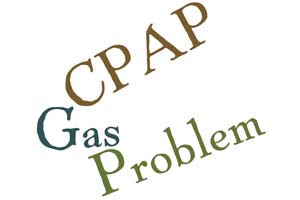
Getting air in your stomach (aerophagia) can be another uncomfortable and sometimes painful CPAP side effect.
Aerophagia is a common thing for many CPAP users, and it happens often in the early days of therapy.
This problem usually goes away. However, some patients can't escape this uncomfortable feeling because they probably have other conditions that cause air swallowing.
GERD (Acid Reflux) or pulmonary issues can cause you to have difficulty exhaling against your pressure.
Solution:
- Treating GERD or using a BiPAP machine instead of CPAP can be helpful to eliminate aerophagia.
- Make sure you are not leaking through your mouth, because if excess air gets into your mouth, there is a tendency to swallow it.
- Use a nasal mask or nasal pillows, and try to sleep with your mouth closed.
- Try teaching yourself to fall asleep with your tongue touching the back of your front teeth and the roof of your mouth. When the tongue is in this placement, it helps keeping the CPAP air inside the upper airway and preventing to swallow the air.
- Gas-X can alleviate the symptoms of aerophagia. Take 1 tablet (or 2 tablets if your doctor allows it) in the morning, and 1 before going to bed. Many CPAP users found aerophagia relief with this medication.
For more info about CPAP aerophagia, see CPAP gas problem solutions.
Nasal CPAP Side Effects:
- CPAP sinus infection - CPAPs do not usually cause sinus infections and most of the time it's just a coincidence, although using the CPAP may be aggravating them.
That's why is important to call your primary care physician to investigate your sinuses and check for allergies to the mask's silicone.
- CPAP mucus congestion - the nasal congestion is usually caused by allergic reaction from the silicone which is what the CPAP nasal pillows and most other masks are made from.
Other cause for CPAP nasal congestion can be the humidifier settings: both too much and too little humidity can cause problems with congestion.
Solution:
- Some CPAP users find relief when they have the humidifier set low, other when they have it high. Some people even do better without humidification. So try adjusting the humidity setting both lower and higher, until you find the sweet spot.
- If you use nasal pillows and have nasal congestion or sinus infection, you might want to try different types of nasal masks or full face masks. The nasal pillows provide the most direct air pressure into your nose and sinuses than the full face mask.
For sinus infections, you need to wear a full face mask while the infection is going on. Sleeping without CPAP when you have sinus problems is not recommended.
- Use the Ayr gel in your nose - It will help with the irritation until the nares toughen up.
- One of the best solution to improve the comfort of nasal therapy is to use Sleep Weaver Mask Cloth instead of nasal pillows.
This mask is all cloth, and may work well if you have allergies and sore nose from nasal mask or nasal pillows. It's also helpful if you have a weird shape nose that doesn't work with other CPAP masks.
The Sleep Weaver is also the easiest mask to keep clean and you don't have to take it apart and reassemble.
Here is a video which explains more about this mask:
 How the CPAP Mask Cloth work?
How the CPAP Mask Cloth work?
Nasal and Throat Congestion
One of the most common CPAP side effects is dryness of nose or nasal congestion. This problem can be a temporary response of your body as it get used with the CPAP.
You may feel like your throat is worn out from CPAP pressure and you will be frustrated.
In normal conditions, your nose is your natural humidifier of the air which you breathe. But if CPAP begins to dry your nose, your body will produce more mucus in the nose to add moisture to the inhaled air.
That's why you can have a nasal congestion.
What should you do?
Learn from the upper tips about Nasal CPAP Side Effects and don't give up your treatment! There are on the market humidifiers which can be attached to your CPAP and make your sleep better.
You could try other techniques to cure sleep apnea, without CPAP, but I insist you should find a way to get used to your breathing machine. The first weeks are critical for a successful CPAP treatment.
CPAP Side Effects From Air Pressure
Why do my lungs hurt after using my CPAP?
Some CPAP users have chest muscle or lung pain when they start the CPAP therapy. The main cause is that these muscles have to work harder in order to breathe against a constant air pressure.
However, chest pain is a complain in people with heart problems. You will need your doctor to check if your chest muscles are sore and not something more serious.
The doctor may use a Spirometer to see if you get pain when blowing in at different pressures. In this way you will find if the air pressure affects your lungs.
Furthermore, a chest X-Ray will be useful to check if you have a foreign object inside your chest.
CPAP Dry Mouth
One of the most common CPAP side effects is dry mouth. This problem appears when you sleep with your mouth open. The pressurized air from CPAP enters in the open mouth and neck causing the unpleasant feeling of drying.
What should you do?
You have to discover if you have the nose congested or a nasal obstruction that force you to sleep with your mouth open.
Talk with your sleep specialist to investigate the problem. You may have a sinus infection.
You need a clean nose in order for CPAP treatment to work well.
Click here to learn how to escape CPAP dry mouth problem.
Pulling Off the CPAP Mask
Sometimes, when a patient starts using CPAP for the first time, he may have a feeling of suffocation, or he might pull the CPAP mask off during sleep.
These side effects are common and it's just a matter of getting used to the mask.
For more info about throwing the mask, see Pulling Off the CPAP Mask.
Uncomfortable CPAP Mask
Mask discomfort is another side effect of CPAP treatment.
The pressure of the mask on your face may be uncomfortable enough that you will be unable to sleep.
This problem appears because you choose a mask that does not fit properly on your face. A CPAP mask should avoid air leak, but also it shouldn't be too tight to be uncomfortable.
So...when you choose a CPAP mask, try it on, to see if the mask does fit properly.
For more info about mask discomfort, see CPAP Mask Uncomfortable.
CPAP Machine Noise
The noise of the CPAP can't be tolerated by some people.
The newer CPAPs are so quiet that noise is rarely an issue. But if the noise is a problem for your bed partner, then you can use an extra length of tubing to move the CPAP machine further away from the bed.
Another solution for your partner is to use earplugs which in this day are quite comfortable.
The Doctor Helps You to Live With CPAP
There are so many ways to survive the CPAP side effects. However, some methods doesn't sound to be recommended by a doctor.
If you still have doubts, then listen the advice of Dr. Jim Abraham from Springfield Clinic, who speak for more than an hour about ways to better tolerate the difficulties in CPAP therapy.
 How to Overcome CPAP Side Effects - part 1
How to Overcome CPAP Side Effects - part 1
 How to Overcome CPAP Side Effects - part 2
How to Overcome CPAP Side Effects - part 2
Bottom line... Should you Stop using the CPAP?
With so many CPAP problems waiting for you on horizon, you'll think there are important reasons to stop using your therapy. But you must remember that you should not discontinue the use of CPAP, even for one night, without speaking with your doctor first.
I know, these CPAP side effects can be unpleasant for you, but there are solutions for almost every problem. You should talk to your doctor or sleep specialist to find a solution.
There is no issue that cannot be worked out especially with the advanced technology of today.
Home › CPAP Machine › CPAP Side Effects
